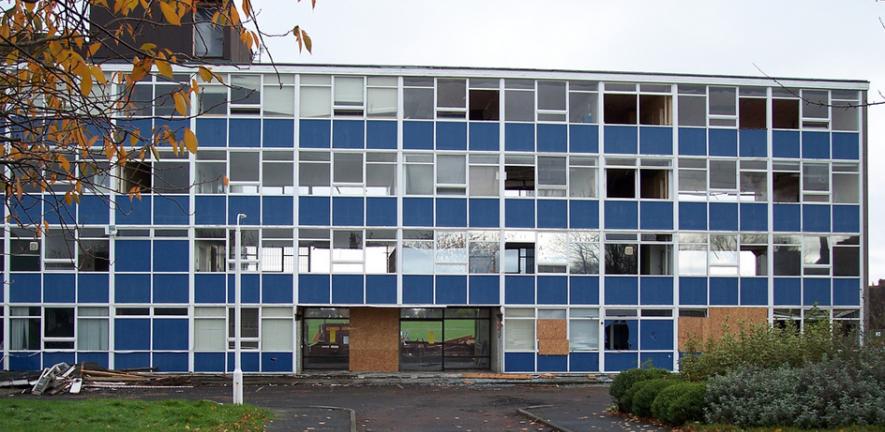
New data obtained by researchers shows that electrical energy consumption in England's schools has gone up, even as heating demand has fallen, with academies consistently using more energy than other institutions.
New data obtained by researchers shows that electrical energy consumption in England's schools has gone up, even as heating demand has fallen, with academies consistently using more energy than other institutions.
In the context of national and international targets, this establishes the need for continued monitoring and research to ensure that the emissions trend is downwards.
Koen Steemers
Typical CO2 emissions from schools in England are rising, despite reductions to their heating demands, because of an increase in electricity consumption, according to new research.
The study also suggests that the new “academies”, schools funded directly by the state and heavily supported by the present Government, have significantly higher energy consumption profiles than normal secondary schools.
Researchers drew primarily on a database of Display Energy Certificates (DECs), which are required under UK legislation, (stemming from EU directives on building energy). These have applied to all public buildings over 1,000m² since 2008, and show the building’s annual energy performance.
The researchers, from the University of Cambridge and Shinawatra University, Thailand, were able to obtain records for around 25,000 DEC’s produced in 2008-9, following a Freedom of Information request to the Department of Communities and Local Government. Previously, only partial datasets had been made widely available, which lacked crucial information such as the type of building to which the DEC applied. This made large scale analysis almost impossible.
Using the FOI-released material, the research team were able to combine information from the certificates with data collected from Ofsted to create a detailed schools database covering about 40% of the primary and secondary schools in England, including academies.
Their findings, published in the new issue of the journal Building Research & Information, explore the key factors affecting energy use in schools, including the type of school, location, and the type of heating, ventilation and air conditioning system it uses.
In general, it was found that existing benchmarks for energy consumption in schools had over-estimated the fossil-thermal energy they need (primarily to heat the buildings), but underestimated the amount of electrical energy schools consume.
The study also found significant differences in energy use between different school types. Both secondary schools and academies were typically found to have higher annual CO2 emissions per m² than primary schools (6% and 27% respectively). Taking account of the different pupil densities was found to accentuate these differences: typical CO2 emissions per pupil were found to be 47% higher in secondary schools, and 116% higher in academies, both compared with primary schools. These differences are due mostly to greater electrical consumption. Academies typically use one-and-a-half times the electricity per pupil compared with secondary schools, and over twice that of primary schools.
Professor Koen Steemers, Head of the Department of Architecture at the University of Cambridge and one of the authors of the new report said: “This research shows that design strategies to reduce heat loss have been moderately effective but have been offset by increasing electricity demands, for mechanical ventilation, lighting or equipment.”
“In the context of national and international targets to reduce emissions, the paper establishes the need for continued monitoring and research into the relative roles of building design, systems and occupant behaviour to ensure that the emissions trend is downwards.”
Researchers believe that a combination of different reasons explains the rise in schools’ electricity consumption. One may be the increase in recent years in IT facilities and other technology to support teaching and learning.
When compared to school energy studies carried out over the last decade, the DEC data showed that there had been reductions in fossil-fuel thermal energy consumption, likely caused by improvements in building thermal performance and heating equipment. Electrical energy consumption has, however, increased, resulting in small increases in CO2 emissions across the school types. Current “good practice” electrical consumption in schools in England is actually worse than typical practice in 1995.
Academies, which are publicly-funded schools operating outside of local authority control and funded directly by central government, tend to have more state-of-the-art buildings and facilities. This may go some distance to explaining why their emissions through electricity use are so much higher.
The present Government has given considerable backing to academies. The research suggests that there will need to be significant reductions in the electrical consumption of academy buildings if they are to form an increasing proportion of the UK’s schools stock and still meet existing commitments to CO2 reductions.
The research team is now further analysing the DEC database, considering other non-domestic building types including hospitals and offices.
Richard Lorch, editor of Building Research and Information, said: “The research breaks new ground and is important for public policy. Monitoring actual energy usage provides an evidence base for how policy translates into practice – in this case how the UK will meet its carbon reduction commitments. In particular, it alerts the Department for Education of the need to review its current and future practices on school design and operation.”
This work is licensed under a Creative Commons Licence. If you use this content on your site please link back to this page.





